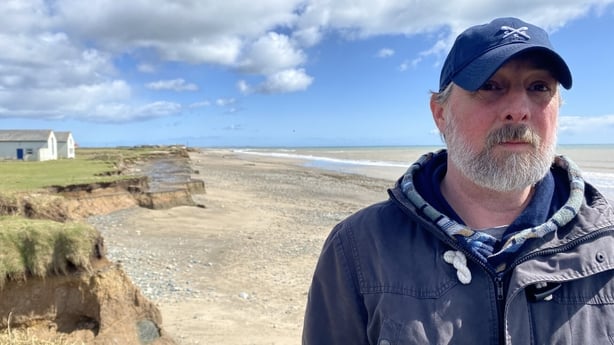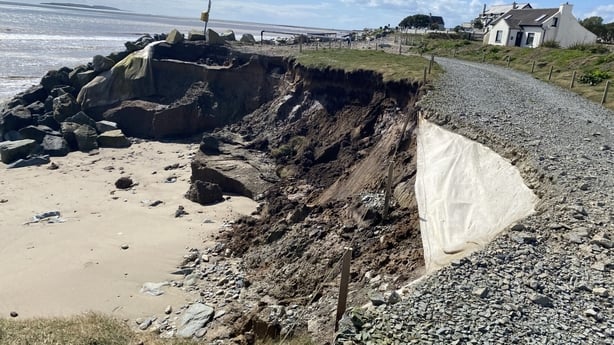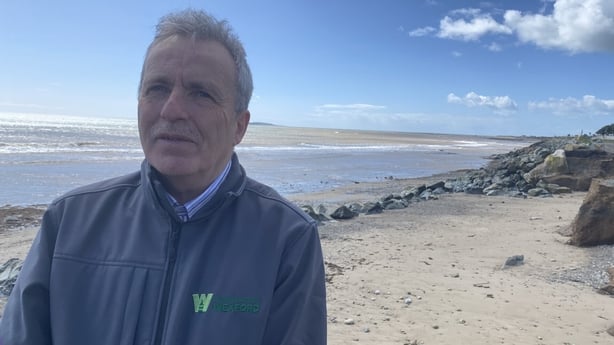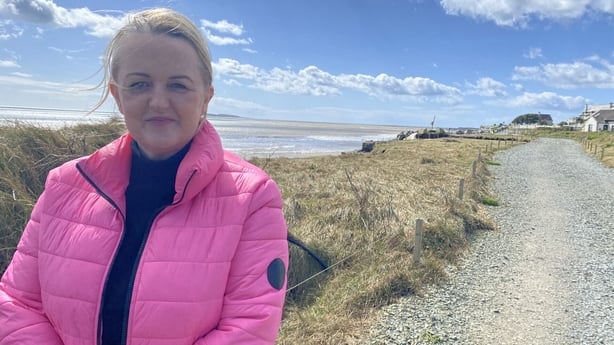There have been renewed demands for action to be taken to protect vulnerable parts of Ireland's coast, following further damage wreaked by the stormy weather of recent days.
Many stretches of the Irish coastline are prone to erosion because of their sandy nature, particularly during windy spells, while climate change and its consequent effects of more frequent storms and rising sea levels has exacerbated the problem.
One length of south Co Wexford shoreline which has been battered several times in recent years took another hit at the weekend due to Storm Kathleen.
Up to three metres of cliff land fell into the sea.
At Sea View, close to Rosslare and Kilmore Quay, a fourth access route to serve a group of houses called Connibeg Cottages and Lismore Cottages was installed by Wexford County Council (WCC) less than two years ago, but is now out of commission because of erosion, while the development has heightened worries about the future of the houses themselves.
Andrew Grant has lived in Connibeg Cottages with his family for several years.
"At the beginning it wasn't so bad with the coastal erosion, but the last three, four years now have just ramped up, year after year after year," Mr Grant said.

He said: "The effect being we're losing a lot of land.
"We're on our fourth road now, so our road is destroyed, and we're very worried about losing the house, being homeless."
Rock protection works carried out by WCC and the Office of Public Works (OPW) over two years ago stopped the sea from getting too close to the cottages themselves, but the scale and pace of erosion means they could come under further threat in the years to come, if it continues unabated.
This issue is a cause of concern for residents including Mr Grant.
"To have a home for my family, to be able to have somewhere to work and bring in an income, and for my children, I'm worried as well about this erosion, it plays on their minds as well," Mr Grant said.
"They worry about losing their house, they worry about having to go somewhere else, that they'll have to change friends," he said.
"It's a big, big worry. It affects not just me, but the family in general," he added.

Senior engineer with WCC Ger Forde said the average loss of coastline over the years was about half a metre per year, but in recent times this has increased significantly.
"Over the weekend here, we lost about three metres at the edge of the access road and the access road to seven of the houses here has gone," he said.
Storm activity during the last number of years has increased, bringing more erosion to soft coasts such as south Wexford.

Read more: Storms adding to Ireland's coastal erosion problem
"We can see the effects of climate change here in Wexford with the frequency of storms and the intensity of them, and we have specific objectives in our climate action plan to deal with both mitigation and adaptation," Mr Forde said.
He said that work has "achieved the objective of protecting houses" to date, but local residents have "a major concern" about the impact future erosion can have.
"We're prioritising areas where there's public infrastructure like public roads and also houses," he said.

Local Fianna Fáil county councillor Lisa McDonald said the storms hitting the southeast coast lately are of the intensity which used to be associated only with the southwest of the country.
Ms McDonald said: "Our coastline here is not rocky, it's very vulnerable, it's very soft, very soft soil.
"We've been known for our golden beaches but now we're seeing large chunks of our coastline being eaten up by each storm.
"Here today, you can see in Sea View the results of Storm Kathleen."
Planning permission was granted to the council yesterday for further rock armour work, to add to the protection work carried out two years ago, but it now needs to go to tender.
"The process is too slow," Ms McDonald said.
"We need the OPW to keep the speed up because climate change has sped up and if it doesn't keep pace with climate change, we'll see large chunks disappear into the sea," she added.







